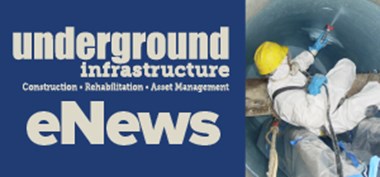Pennsylvania Regulators Develop Tool to Improve Chesapeake Bay Water Quality

About 200 leaders from municipal governments, county conservation districts, agriculture, environmental groups, water companies, and other entities today participated in a meeting hosted by the Pennsylvania Department of Environmental Protection (DEP) to expand local engagement in Phase 3 of the plan for improving water quality in the state’s portion of the Chesapeake Bay Watershed.
“After the successful public kickoff of the Phase 3 planning process last June, the steering committee and six work groups—about 80 state and local volunteers—worked to compile data, analyze research, and determine the most viable strategies to meet our obligations,” said DEP Secretary Patrick McDonnell. “Taking a county-level approach is critical if Pennsylvania is to attain its pollution reduction goals.”
Participants in the meeting shared their expertise to help finalize the Community Clean Water Toolbox drafted by the Local Area Goals Work Group, co-chaired by Lisa Shaeffer, Director of Government Relations, County Commissioners Association of Pennsylvania; Steve Taglang, DEP Bureau of Clean Water; and Davitt Woodwell, President and CEO, Pennsylvania Environmental Council.
The toolbox presents a draft set of local data, resource, engagement, planning, and tracking tools available to counties for developing and implementing action plans to reduce nitrogen, phosphorous, and sediment from streams and rivers. It quantifies the amount of pollutants reduced so far, current pollutant levels, and further reductions needed for each county.
“Rather than a regulatory requirement, the aim is to have counties use these numbers to define their pollutant reduction goals and identify existing and proposed local initiatives that can help meet them,” added McDonnell. “The goals are measurable and trackable to ensure progress.”
According to DEP, the participating counties will pilot the toolbox to create their action plans by October. The toolbox will then be further modified, as needed, for potential use by other counties in the watershed. A timeline for completion of their action plans will be included in the state Phase 3 plan due to the U.S. Environmental Protection Agency early next year.
The EPA’s draft pollutant reduction targets for Pennsylvania’s part of the Chesapeake Bay Watershed are 73.1 million pounds of nitrogen and 3 million pounds of phosphorous. To meet these goals, the state needs to eliminate 36.3 million pounds of nitrogen and .8 million pounds of phosphorous.
Related News
From Archive

- Glenfarne Alaska LNG targets late-2026 construction start for 807-mile pipeline project
- U.S. water reuse boom to fuel $47 billion in infrastructure spending through 2035
- $2.3 billion approved to construct 236-mile Texas-to-Gulf gas pipeline
- Major water pipe break in Puerto Rico hits over 165,000 customers
- Potomac River Tunnel project enters construction phase beneath Washington, D.C.
- Pennsylvania American Water launches interactive map to identify, replace lead water service lines
- Trump's tariffs drive $33 million cost increase for Cincinnati sewer project
- Utah city launches historic $70 million tunnel project using box jacking under active rail line
- Tulsa residents warned after sewer lines damaged by boring work
- Fatal trench collapse halts sewer construction in Massachusetts; two workers hospitalized



Comments